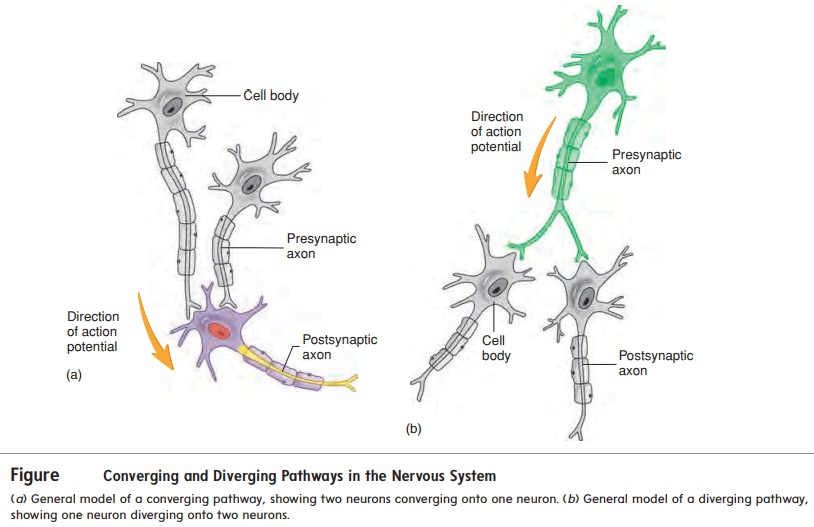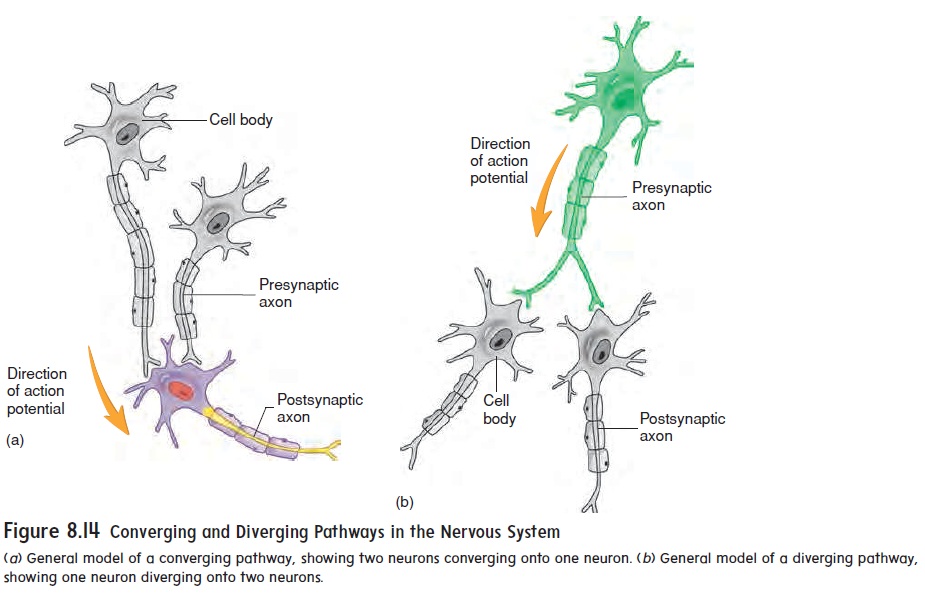Chapter: Essentials of Anatomy and Physiology: Nervous System
Neuronal Pathways - Electrical Signals and Neural Pathways

Neuronal Pathways
Neurons are organized within the CNS to form pathways ranging from relatively simple to extremely complex. The two simplest pathways are converging and diverging pathways. In a convergingpathway, two or more neurons synapse with (converge on) the sameneuron (figure 8.14a). This allows information transmitted in more than one neuronal pathway to converge into a single pathway. In a diverging pathway, the axon from one neuron divides (diverges)

Within the CNS and in many PNS synapses, it takes more than a single action potential to have an effect. A single presyn-aptic action potential usually does not cause a sufficiently large postsynaptic local potential to reach threshold and produce an action potential in the target cell. Instead, many presynaptic action potentials are needed in a process called summation. Summation of signals in neuronal pathways allows integration of multiple sub-threshold local potentials. Summation of the local potentials can bring the membrane potential to threshold and trigger an action potential. Spatial summation occurs when the local potentials originate from different locations on the postsynaptic neuron— for example, from converging pathways. Temporal summation occurs when local potentials overlap in time. This can occur from a single input that fires rapidly, which allows the resulting local potentials to overlap briefly. Spatial and temporal summation can lead to stimulation or inhibition, depending on the type of signal. Collectively, this integration of multiple inputs determines whether the postsynaptic neuron will fire an action potential.
Related Topics